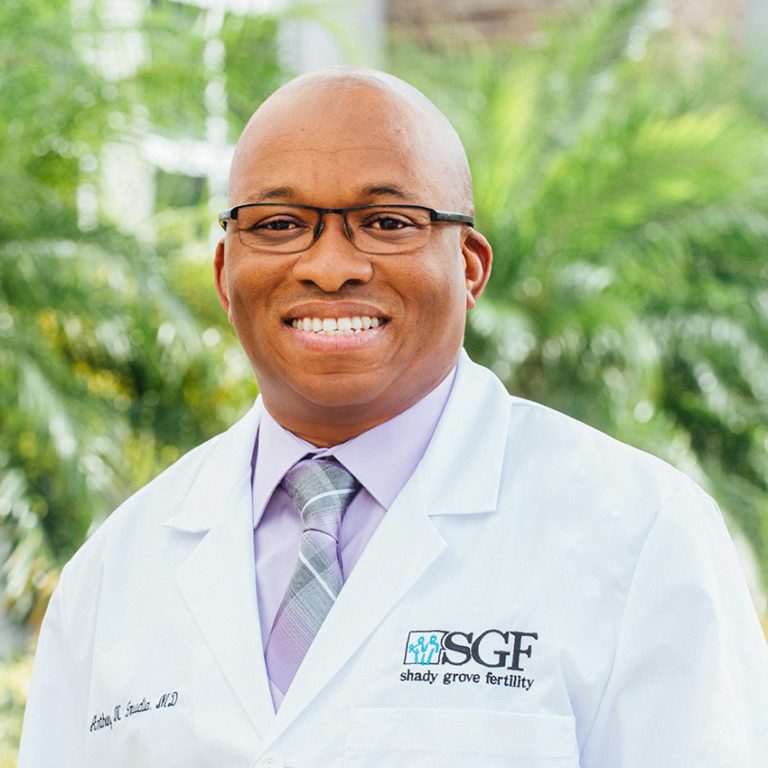Egg freezing is a medical strategy to suspend fertility in time, preventing the decrease in quality and quantity that inevitably comes with age. Biology aside, the best time to have a baby is an incredibly personal decision and one that takes significant thought and consideration. Patients may choose to freeze their eggs for many reasons. Anthony Imudia, M.D., who sees patients at SGF’s Wesley Chapel and Tampa – Westshore, Florida offices provides the five steps in an egg freezing cycle.
After completing ovarian reserve testing, the physician consultation, and deciding to move forward with egg freezing, patients work with their physician and nursing team to determine a timeline of when to start an egg freezing cycle. From birth control to the actual freezing of the eggs, the egg freezing cycle is comprised of 5 main steps:
Step One:
Birth Control: 2-3 weeks
Birth control pills are used to help follicles grow at the same rate so that their subsequent stimulation can be synchronized but can also help with scheduling flexibility. Birth control pills enable us to manipulate when the patient wants their ovarian stimulation and egg retrieval to be. Upon selecting a retrieval week, your SGF care team can work backwards to select a start date.
Step Two:
Egg Freezing Cycle Day 1: 10-12 days, 6-9 monitoring appointments
Upon the start of your menstrual cycle, or after stopping birth control pills, patients will initiate daily injectable medications of the natural hormones follicle-stimulating hormone (FSH) and luteinizing hormone (LH). The medications are higher doses of hormones that replicate the natural hormones your body produces to mature one egg. The goal is to stimulate the growth and development of multiple eggs to freeze than what your body would do naturally.
During this time, patients come to SGF for regular monitoring appointments, which include bloodwork and an ultrasound to ensure that follicles are growing appropriately and to change medication dosage, if necessary. This is about a 10–15-minute appointment that can be scheduled as early as 7:00 a.m. at many of the SGF offices. This enables patients to go to work as normal without disrupting your day.
Because the medications are natural, there are no unique side effects; but because the ovaries are becoming larger, there may be abdominal discomfort or bloating. Similarly, estrogen levels are increased, so the patient may experience heightened PMS symptoms.
Step Three:
The Trigger injection
At the end of the stimulation period, the patient will be instructed to take a trigger injection. This injection helps the eggs mature and prepares the body for the egg retrieval.
Step Four:
Egg retrieval
Two days following the trigger injection, the patient goes to one of SGF’s procedure centers for the egg retrieval. This intra-vaginal procedure takes place while the patient is under IV sedation, so they are asleep and pain-free. Even though the procedure is relatively quick, because of the effect of anesthesia, it is required that someone is available to drive the patient home. This is the only day the patient would miss work.
Step Five:
Freezing the retrieved eggs
Once retrieved, embryologists evaluate the eggs to determine which ones are matured and will freeze only the matured eggs. Eggs are frozen using vitrification, an ultra-rapid cooling process, and are then stored in liquid nitrogen for long-term storage. The patient is contacted the following day to let her know how many eggs were frozen. 7-14 days after the retrieval, the patient can expect to have their period.
On average, each egg freezing patient completes two egg freezing cycles to reach the recommended number of eggs. Not every egg will result in a pregnancy when couples try to conceive on their own, and the same truth applies when you freeze your eggs. Thus, SGF recommends that women 37 or younger who have excellent ovarian reserve function freeze between 15 to 20 matured eggs. For women over 37, or women at any age with diminished ovarian function, we recommend freezing 25 to 30 eggs. This provides the patient with multiple attempts to conceive.
Learn more about egg freezing
Medical contribution by Anthony N. Imudia, M.D.
Anthony Imudia, M.D., is board certified in obstetrics and gynecology and reproductive endocrinology and infertility. He is currently the Division Director and Fellowship Director, Division of Reproductive Endocrinology and Infertility, USF Morsani College of Medicine. Dr. Imudia sees patients at SGF’s Wesley Chapel and Tampa – Westshore, Florida offices.
Editor’s Note: This article was originally published in April 2018, and has been updated for content accuracy and comprehensiveness as of July 2022.







